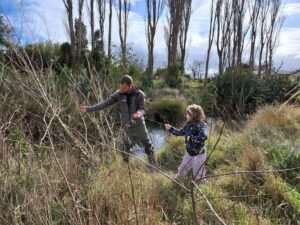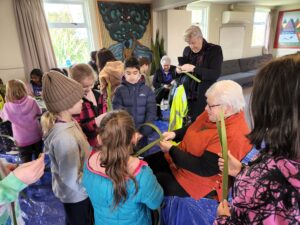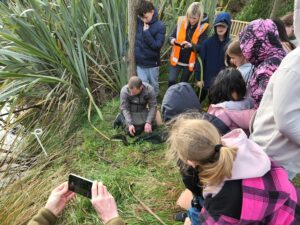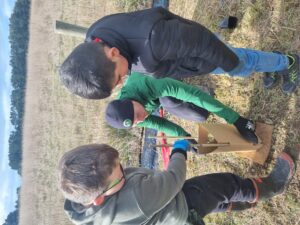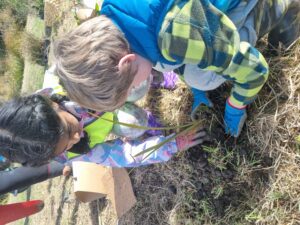
- This event has passed.
Tamariki get involved in planting for Te Waikēkēwai restoration
Rolleston tamariki get involved in Te Taumutu Rūnanga’s planting project along Te Waikēkēwai
Students from the Waitaha and Te Rōhutu Whio schools in Rolleston have been busy learning and actively improving the environment during Kids Discovery Plant-out days with Te Taumutu Rūnanga in Te Waihora catchment.
During the fieldtrips, organised by the Whakaora Te Waikēkēwai project team and Te Ara Kākāriki Greenway Canterbury Trust, students planted in-fill plantings in the riparian margin along the Te Waikēkēwai/Waikēkēwai Stream. Whakaora Te Waikēkēwai is a five-year river restoration project, led by Te Taumutu Rūnanga, that extends eight kilometres upstream from Ngāti Moki Marae.
The native seedlings will help to stabilise the riverbanks and prevent sediment eroding into the river, as the vegetation will filter farm run-off and as well as providing habitat for aquatic wildlife.
The wildlife in Te Waikēkēwai/Waikēkēwai Stream proved to be plentiful, and the students were spell-bound by the many tuna (long-finned eel) in the river, some estimated to be 40 years or older, as well as inanga (whitebait) and cased caddisfly larvae, which are considered taonga and deserving of care and protection.
Students were also treated to a lesson in raranga (weaving) with Aunty Daph and learnt to make harakeke (flax) putiputi (flowers) or ika (fish).
Lou Drage, the Kids Discovery Plant-out coordinator said that the students enjoyed taking action to link their learning from the classroom to the field.
“This programme is engaging students with nature and empowering them to make a positive difference to the health of our local waterways and Te Waihora.”
The Whakaora Te Waikēkēwai project team welcomes community interest and engagement in this project. Please contact Sophie.McGregor@ngaitahu.iwi.nz for more information.
Project background
Whakaora Te Waikēkēwai aims to restore the lower-mid catchment of Te Waikēkēwai/Waikēkēwai Stream by improving water quality, enhancing mahinga kai opportunities and increasing indigenous biodiversity. The project is led by Te Taumutu Rūnanga and co-managed by Environment Canterbury, funded through Environment Canterbury and the Government’s Freshwater Improvement Fund, administered by the Ministry for the Environment, and governed by the Te Waihora Co-Governance Group.
